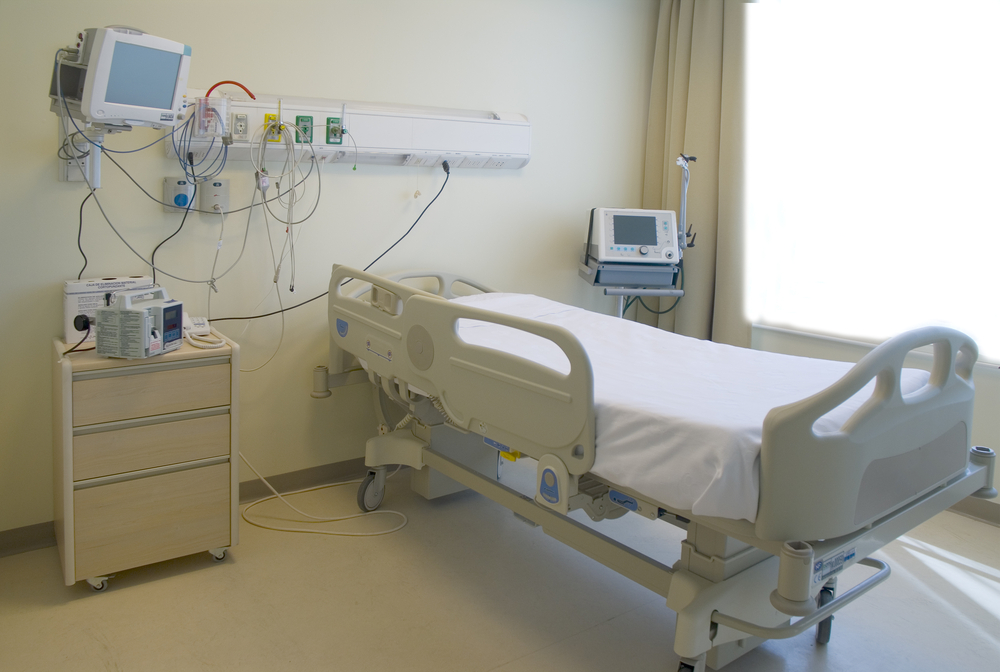
Liaison psychiatry brings together medical and psychiatric staff in hospital wards and emergency departments, with the aim of more adequately addressing comorbidities between physical and mental health. It’s something that’s been discussed in the Woodland before, with recommendations for wider implementation.
The Guardian recently published an article discussing the findings of a recent study and presenting a useful personal story to illustrate the value of the service. The study is of the Rapid Assessment, Interface and Discharge (RAID) model of integration, as practiced at City Hospital in Birmingham. The RAID model provides liaison psychiatry delivering rapid response 24/7. The RAID team consists of a multi-disciplinary team, who also provide training to hospital staff.
We’ve actually covered this study before, when a report was released by the Centre for Mental Health in 2011. It concluded that the project was very cost-effective. However, this report was extremely opaque, with little description of the methods or data used. As such, it wasn’t possible to determine whether or not the reported findings were valid. Thankfully, the study has now been fully reported and it seems that the conclusions were justified.
Methods
The paper, published in The Psychiatrist by Prof George Tadros and colleagues, uses data from admissions to all 600 beds in the acute hospital between December 2008 and July 2010. The RAID model was launched in December 2009 with an investment of £0.8 million. The study establishes 3 samples:
- RAID group: all emergency admissions with a mental health diagnosis that were referred to the RAID team between December 2009 and July 2010.
- RAID-influence group: all emergency admissions with a mental health diagnosis that were not referred to RAID, but were discharged between December 2009 and July 2010.
- Pre-RAID: all emergency admissions with a mental health diagnosis that were admitted between December 2008 and July 2009.
The RAID-influence group is included in order to capture the full value of the RAID training. The study evaluates 2 outcomes; length of hospital stay and time to readmission. The former employed probabilistic matching between each of the 2 treatment groups and the control group. The latter employed a survival analysis.

The impact of training is key to the effectiveness of RAID
Results
- The main direct effect of the RAID model was on time to readmission:
- The rate of readmission in the RAID group was 4 for every 100 patients
- While in the pre-RAID group it was 15 for every 100
- Including the RAID-influence group, the total reduction in readmissions is estimated to be 1,800 over 12 months. This equates to a saving of 8,100 bed-days per year
- There is also a strong indirect effect resulting from the broader influence on those not referred to the service, in the form of reduced lengths of stay:
- The RAID-influence group demonstrated an average length of stay 3.2 days shorter than that of the pre-RAID group. This corresponds to a total saving of 13,935 bed-days per year
- All in all, the RAID model is estimated to save between 43 and 64 beds per day, which is equivalent to 2-3 wards
- Most of the savings were accrued by geriatric wards

Empty hospital beds still cost money, so savings are limited in the short run
Discussion
If the results of this study are to be believed, then the potential cost savings are staggering. The study estimates the potential savings to be £4-6 million. Unfortunately, as with all news like this, there are caveats.
The study’s major limitation is its design, of course; not being a randomised trial. We cannot discount the possibility that there would have been a drop in lengths of stay and readmissions between the two periods even if RAID hadn’t been introduced (though a quick look at some Hospital Episode Statistics suggests this wasn’t happening elsewhere). It’s worth noting that during the period of the RAID intervention City Hospital did, in fact, close 60 beds with no apparent reduction in services.
The finding relating to length of stay is particularly questionable, because the authors’ approach of probabilistic matching reduced the sample size dramatically. The paper also lacks some explanation. The nature of the RAID model is unclear; for example, we do not know on what grounds people are referred to the service. Furthermore, the costing of the service is rudimentary; assuming the block payment of £0.8 million as the cost of the service is unrealistic. A breakdown of the administrative costs and training costs associated with the programme should be provided. Furthermore, we cannot tell the extent to which shorter stays and reduced readmissions resulted in greater service use at other facilities.
Economic evaluations of service delivery are notoriously difficult because the cost implications are often broad and the health impacts small. Nevertheless, cost-saving interventions are rare, and when we find them we should do all we can to fully evaluate their cost-effectiveness. The findings of this study are extremely promising and the RAID model appears to be a good reference case for the delivery of liaison psychiatry. Hopefully we’ll see further observational and econometric studies of this and similar interventions in the future.
Links
Tadros G, Salama RA, Kingston P, Mustafa N, Johnson E, Pannell R, Hashmi M. Impact of an integrated rapid response psychiatric liaison team on quality improvement and cost savings: the Birmingham RAID model. The Psychiatrist 2013, 37(1), 4-10.
Lawson K. Liaison Psychiatry for all! The Mental Elf, 21 Jan 2014.
Whitehead S. Psychiatric support teams improve patient care and save hospitals millions. The Guardian, 3 Jun 2014.
Tomlin A. Liaison psychiatry teams in general hospitals can achieve major cost savings to the NHS, finds new report. 18 Nov 2011.

The cost-effectiveness of liaison psychiatry: the case of RAID: Liaison psychiatry brings together medical and… http://t.co/DHjq3VeDsI
RT @Mental_Elf: The cost-effectiveness of liaison psychiatry: the case of RAID http://t.co/iVUNF9NYsK
Morning @tadhg50 @SameiHuda @PsychiatrySHO Do have a look at @ChrisSampson87’s blog on the RAID study http://t.co/IHMBVx76FO
@Mental_Elf @SameiHuda @PsychiatrySHO @ChrisSampson87 Thanks Elf! Will look further. worked in A&E Liaison for several years so interested!
@Mental_Elf @tadhg50 @SameiHuda @ChrisSampson87 ‘admissions with a mental health diagnosis’ – you mean usually an incidental one?>>
@PsychiatrySHO @Mental_Elf @tadhg50 @SameiHuda problem with the paper is that it’s unclear about that – I suspect true in a lot of cases
@PsychiatrySHO @Mental_Elf @tadhg50 @SameiHuda “reasons for referral… self-harm (32%), depression (18%), dementia (18%), alcohol (13%)…”
@ChrisSampson87 @PsychiatrySHO @Mental_Elf @tadhg50 @SameiHuda surprised that #alcohol is so low
@ian_hamilton_ @PsychiatrySHO @Mental_Elf @tadhg50 @SameiHuda there may be a learning effect – diagnosis of alcohol disorders increased 21%
@ChrisSampson87 @PsychiatrySHO @Mental_Elf @tadhg50 @SameiHuda interesting you mean the staff became more vigilant for alcohol use ?
@ian_hamilton_ @PsychiatrySHO @Mental_Elf @tadhg50 @SameiHuda all speculation, but it’s possible!
@Mental_Elf @tadhg50 @SameiHuda @ChrisSampson87 >> liaison improves comms + speedy d/c, return w same prob, there4 save £, shld be funded++
@Mental_Elf @tadhg50 @SameiHuda @PsychiatrySHO @ChrisSampson87 ‘the study’s main limitation is its design…’ Indeed.
@asangafern …MT”@Mental_Elf: Morning.. Do have a look at @ChrisSampson87’s blog on the RAID study http://t.co/9zsRk8aE2Q“
@Psycle_Doc @Mental_Elf @ChrisSampson87 fascinating- impressive for raid. Why are proper economic evaluations in healthcare so rare/lacking?
Lisa Eden liked this on Facebook.
The Mental Elf liked this on Facebook.
New blog post by me at @Mental_Elf about cost-saving liaison psychiatry http://t.co/gikWikZCyQ
@ChrisSampson87 @Mental_Elf Do you share information with patients about local organisations they can get support from?
@ChrisSampson87 @Mental_Elf We @MaudsleyNHS have produced general leaflets for our 4 boroughs and another for people who self-harm.
Today @ChrisSampson87 blogs about the Birmingham RAID model for integrated rapid response psychiatric liaison teams http://t.co/IHMBVx76FO
Mental Elf: The cost-effectiveness of liaison psychiatry: the case of RAID http://t.co/83gvfBJd8u
Could psychiatric liaison teams save the NHS millions? http://t.co/IHMBVx76FO
@Mental_Elf Liaison could support others to identify MH problems & reduce need for repeated further investigation & unnecessary intervention
@Mental_Elf Not unless funding structures are radically altered.
Join the discussion about liaison psychiatry and the RAID model on our blog: http://t.co/IHMBVx76FO
The cost-effectiveness of liaison psychiatry: the case of RAID http://t.co/FOZKfc8we7 via @sharethis
New blog post by @ChrisSampson87 at @Mental_Elf about cost-saving liaison psychiatry http://t.co/rnLoUvhNzN
Don’t miss: The cost-effectiveness of liaison psychiatry – the case of RAID http://t.co/IHMBVx76FO
@Mental_Elf fascinating evidence of how an ‘enhanced24’ service can benefit. 61% trusts in England however have inadequate services
Psychiatry integrated into medical care is cost effective, as well as being the right model of care. http://t.co/QwWCIld0lX